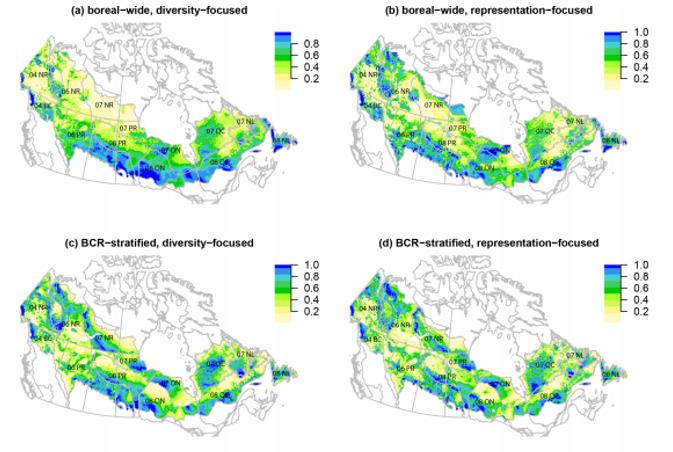Conservation Applications and Impacts
Type of resources
Topics
Keywords
Contact for the resource
Provided by
Formats
Representation types
Update frequencies
status
Scale
Regions
Categories
-

Information from over 1.5 million avian point count surveys were used with land cover, disturbance, topography, climate, and spatio-temporal variables to generate 9 model subsets that explained the variation in abundance of the three focal species across Canada. We used different model subsets to account for different spatial extents and co-linearity among variables. Poisson log-linear regression models were produced using a branching hierarchy model building process and bootstrap procedures to account for model uncertainty. Model validation suggested that our habitat models had very good predictive and discriminatory power. We compared our population estimates to those derived from data and methods used by Partners in Flight. This exercise highlighted important discrepancies in population size estimates when using different analytical approaches and including off-road surveys. Although our habitat models were derived from the best available information, we provided a detailed list of future studies required to address remaining gaps in the breeding ecology and habitat modelling of these species.
-

Zones prioritaires pour la conservation des oiseaux chanteurs boréaux au Canada : Résultats de 128 scénarios pour 63 espèces de passereaux basés sur le logiciel de planification de la conservation Zonation.
-

Species specific mean projections and uncertainty estimates (coefficient of variation) of80 boreal-breeding songbird species generated using boosted regression tree models for the current period (based on climate data from 1961-1990) and three future time periods (2011–2040, 2041–2070, 2071–2100).
 BAM GeoPortal
BAM GeoPortal